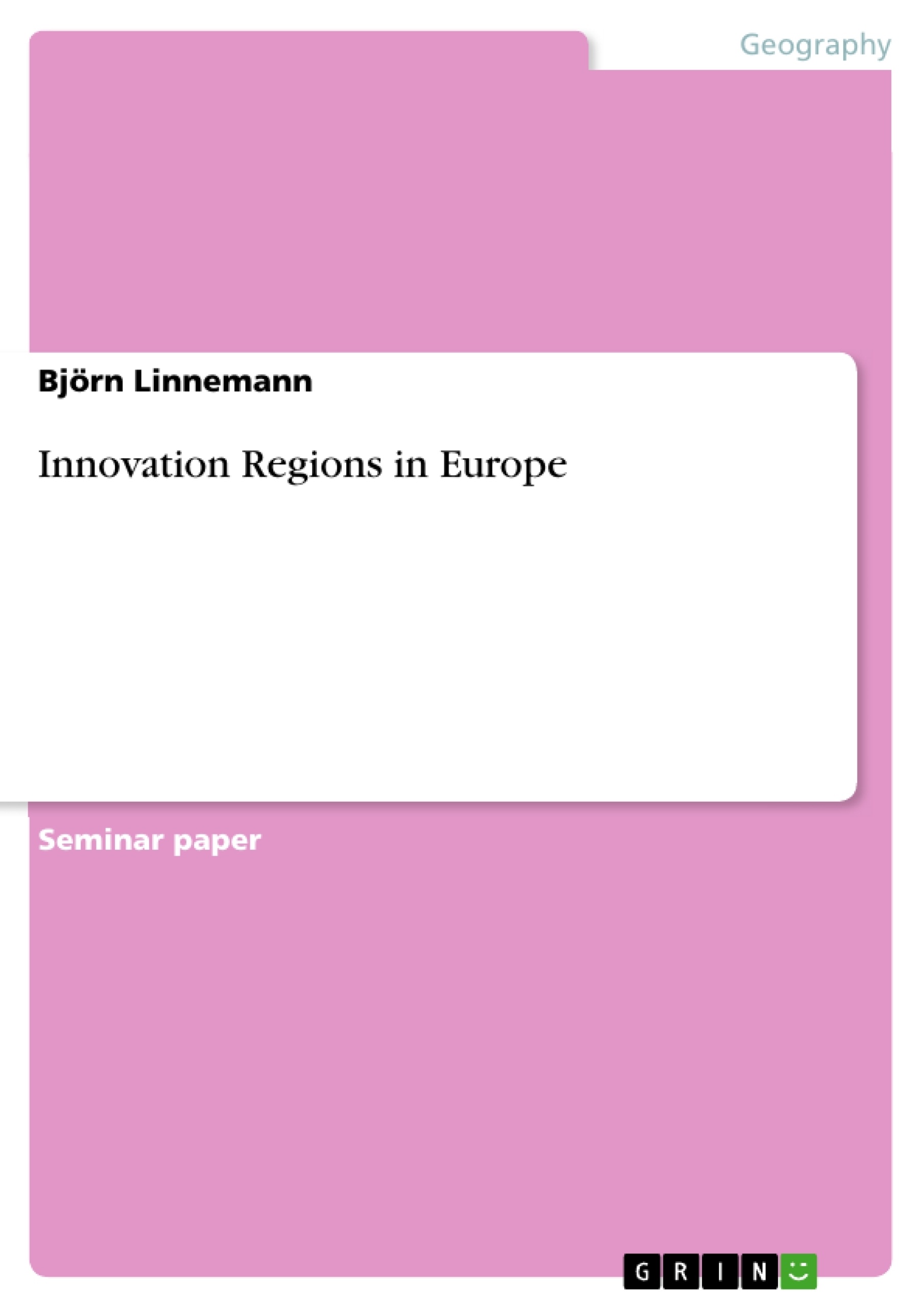Ever since Schumpeter’s work on the business cycles, innovation is widely claimed to be a central aspect of economic development. With market expansion reaching its limits and mass production being relocated into low cost countries, the role of innovation gained more and more importance in order to maintain growth in western industrial countries. In contrast to the industrial processes, innovation is not a process, which can be standardised or routinised. It does not follow mathematically ascertainable schemes, but is rather a dynamic process, which is formed by several factors interacting and enforcing each other (Cooke and Morgan, 1998). The aim of this paper is to shed light on empirically determined factors that promote innovation in certain regions. Eventually some remarkable examples of innovative regions in Europe will underline and verify their importance.
CONTENTS
LIST OF FIGURES
1 I
2 Spatial aspects of innovation - Why innovations occur in clusters
2.1 Sharing of tacit knowledge
2.2 The role of metropolitan regions
2.3 Services and intermediaries
2.4 Systematic innovation and insitutional
3 European high-tech regions as empirical evidence
3.1 The Cambridge Phenomenon
3.2 Munich - Leading high tech region in Germany
3.3 Baden Württemberg - A successful region facing challenges
3.4 Tampere - From resource-based to knowledge-based economy
3.5 Grenoble - France’s Leading edge technology
4 C
REFERENCES
- Citar trabajo
- M Sc Geography Björn Linnemann (Autor), 2010, Innovation Regions in Europe, Múnich, GRIN Verlag, https://www.grin.com/document/198589
-

-

-

-
¡Carge sus propios textos! Gane dinero y un iPhone X. -

-
¡Carge sus propios textos! Gane dinero y un iPhone X. -

-
¡Carge sus propios textos! Gane dinero y un iPhone X. -

-
¡Carge sus propios textos! Gane dinero y un iPhone X. -

-
¡Carge sus propios textos! Gane dinero y un iPhone X. -

-
¡Carge sus propios textos! Gane dinero y un iPhone X. -

-
¡Carge sus propios textos! Gane dinero y un iPhone X.

